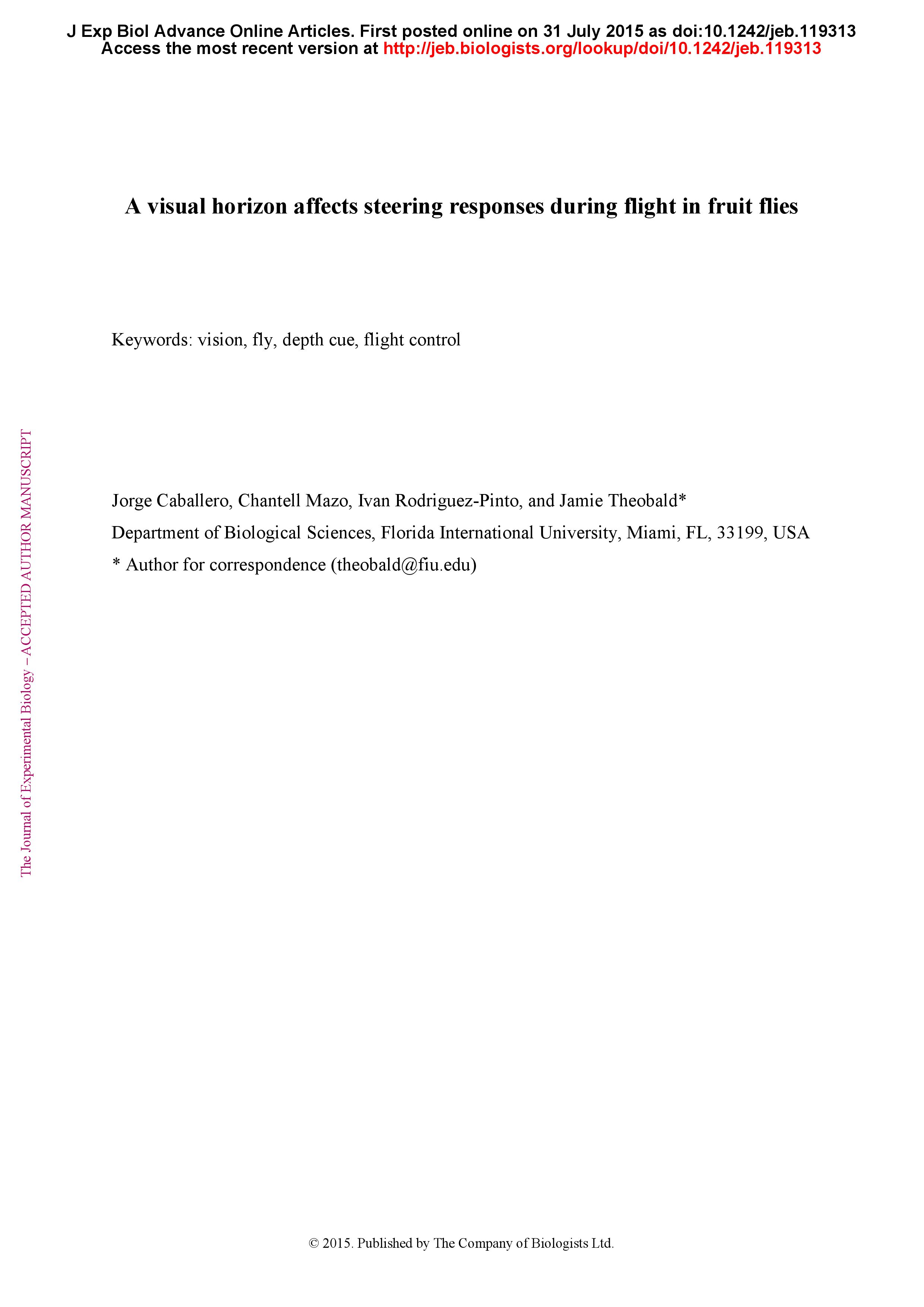To navigate well through three dimensional environments, animals must in some way gauge the distances to objects and features around them. Humans use a variety of visual cues to do this, but insects, with their small size and rigid eyes, are constrained to a more limited range of possible depth cues. For example, insects attend to relative image motion when they move, but cannot change the optical power of their eyes to estimate distance. On clear days, the horizon is one of the most salient visual features in nature, offering clues about orientation, altitude, and for humans, distance to objects. We set out to determine if flying fruit flies treat moving features as farther off when they are near the horizon. Tethered flies respond strongly to moving images they perceive as close. We measured the strength of steering responses while independently varying the elevation of moving stimuli and the elevation of a virtual horizon. We found responses to vertical bars are increased by negative elevations of their bases relative to the horizon, closely correlated with inverse of apparent distance. In other words, a bar that dips far below the horizon elicits a strong response, consistent with using the horizon as a depth cue. Wide-field motion also had an enhanced effect below the horizon, but this was only prevalent when flies were additionally motivated with hunger. These responses may help flies tune behaviors to nearby objects and features when they are too far off for motion parallax.
A visual horizon affects steering responses during flight in fruit flies
Currently Viewing Accepted Manuscript - Newer Version Available
- Split-screen
- Views Icon Views
- Open the PDF for in another window
-
Article Versions Icon
Versions
- Version of Record 01 September 2015
- Accepted Manuscript 01 January 2015
- Share Icon Share
-
Tools Icon
Tools
- Search Site
Jorge Caballero, Chantell Mazo, Ivan Rodriguez-Pinto, Jamie Theobald; A visual horizon affects steering responses during flight in fruit flies. J Exp Biol 2015; jeb.119313. doi: https://doi.org/10.1242/jeb.119313
Download citation file:
Advertisement
2023 JEB Outstanding Paper Prize shortlist and winner

The JEB Editors are delighted to announce the shortlisted authors for the 2023 JEB Outstanding Paper Prize. Read the winning paper - Tiny spies: mosquito antennae are sensitive sensors for eavesdropping on frog calls - by Hoover Pantoja-Sanchez and Brian Leavell from Ximena Bernal's lab at Purdue University, USA.
JEB Science Communication Workshop for ECRs

If you’re an early-career researcher interested in science communication and are attending the SEB Annual Conference in Prague this summer, come a day early and join the JEB Editors at a sci comm workshop to learn the key writing skills needed to promote your research to a broad audience beyond your peers (1 July at 14.30-17.30). Places are limited to 24 attendees, and applicants should apply through the SEB registration page by 30 April 2024.
Bridging the gap between controlled conditions and natural habitats in understanding behaviour

Novel technologies enable behavioural experiments with non-model species, in naturalistic habitats and with underexplored behaviours. In their Commentary, Scholz and colleagues discuss how to obtain a deeper understanding of the natural ecology and lifestyle of study animals.
Beluga metabolic measures could help save species

To help save animals from extinction, it’s important to understand what each species needs to survive. This led Jason John et al. to measure the metabolic rates of captive belugas to develop a ‘fish calculator’ showing that the whales need to eat ~23 salmon per day.
ECR Workshop on Positive Peer Review

Are you an ECR looking for tips on how to write concise, astute and useful manuscript reviews? If so, join the JEB Editors at a 2-hour JEB-sponsored Workshop on Positive Peer Review at the Canadian Society of Zoologists annual meeting in Moncton on 9 May 2024 at 13.00-15.00. There are 25 spaces for ECRs and selection is first come, first serve. To sign up, check the ECR Workshop box when you register for the CSZ meeting.



